Intel’s new Xeon E3-1200 v5 Skylake processors have proven to be top performers in our tests so far, coupled with the new C236 chip set we have platforms that boost performance on a wide range of systems. Today we will take a look at a workstation motherboard from Supermicro called the X11SAT-F. There are many choices for workstation motherboards in this class, generally from enthusiest motherboards offered by many vendors. The Supermicro X11SAT-F stands out from the others with server quality components and the addition of IPMI which is useful for remote installs and managing a large number of workstations in a production environment.
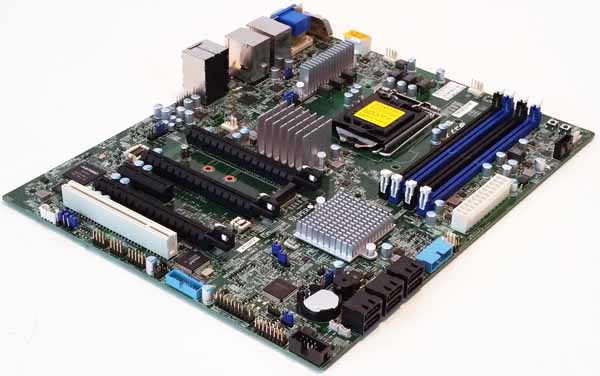
Supermicro X11SAT-F motherboard key features
- Single socket H4 (LGA 1151) supports Intel Xeon processor E3-1200 v5, Intel 6th Gen. Core i7/i5/i3 series
- Intel C236 chipset
- Up to 64GB Unbuffered ECC/non-ECC UDIMM DDR4 2133MHz; 4x DIMM slots
- 3x PCIe 3.0 x16 (run at 16/NA/16 or 16/8/8), 1x PCIe 3.0 x1 (in x4), and 1x 5V PCI 32-bit slots
- Single GbE LAN with Intel i210-AT Single GbE LAN with Intel i219V
- 6x SATA3 (6Gbps) via C236; RAID 0, 1, 5, 10
- I/O: 1x VGA, 1x COM, TPM 1.2 header
- 2x SuperDOM with built-in power
- 6x USB 3.0 (2 rear + 4 via header), 4x USB 2.0 (2 rear + 2 via header), 1x USB 3.1 (10Gbps) Type-C ports (rear, share with Thunderbolt and display port)
- M.2 NGFF connector
- Form Factor ATX
- Dimensions 12″ x 9.6″, (30.5cm x 24.4cm)
Close look at the Supermicro X11SAT-F motherboard
With a top down view of the X11SAT-F we can see this motherboard uses a standard component layout. Low power consumption is the hallmark of the Intel Skylake platform and hence does not require heavy duty power circuits and heat sinks to keep the CPU power circuits cool. At the lower right corner we find several push button switches for power, reset and clear CMOS.
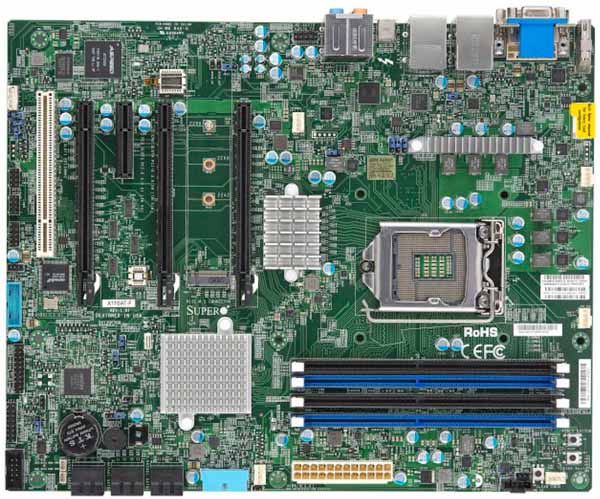
At the front of the motherboard there are 6x SATA 3.0 ports that can be setup for RAID 0, 1, 5, 10 support through the C236 controller. The Blue header is for front mounted USB 3.0 ports.
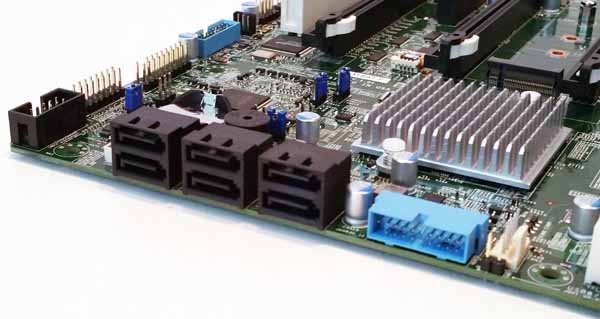
PCIe slots are arranged with the white slot as #1 which is a PCI 33MHz slot for legacy devices (at this point very old devices.) slots 2, 4 and 5 are PCIe 3.0 x16 xlots and slot 3 is a PCH PCIe 3.0 x1 (IN x4) slot.
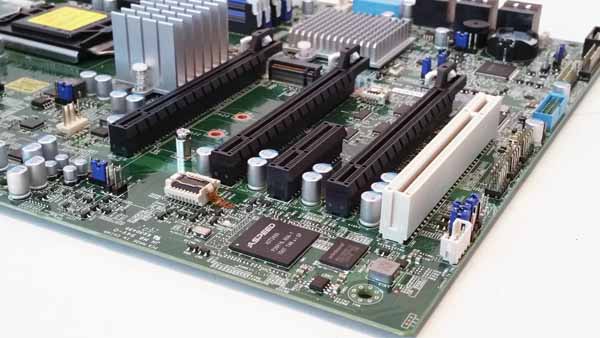
In-between PCIe slots 4 and 5 is a PCIe M.2 Connector which would be well suited for a OS drive.
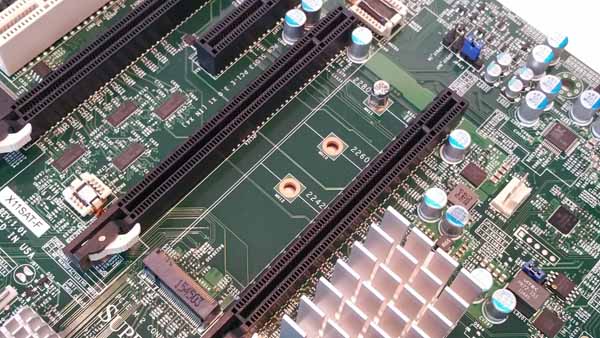
The back IO ports on the X11SAT-F have a HDMI port at the far left and VGA (X11SAT-F only) and DVI port. The standard pair of dual USB 2.0 and USB 3.0 ports follow with LAN ports above. The left LAN port is also a dedicated IPMI port. Just to the right of these stacks is a Thunderbolt port.
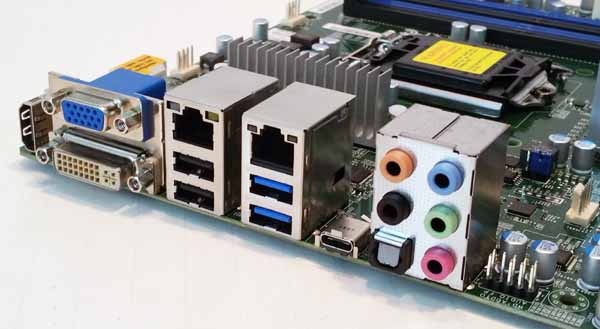
Overall this is a fairly complete solution for anyone looking at an ATX LGA 1151 motherboard.
BIOS
The BIOS for the X11SAT-F is fairly straight forward with one exception for a workstation motherboard, it comes equipped with IPMI which we like.
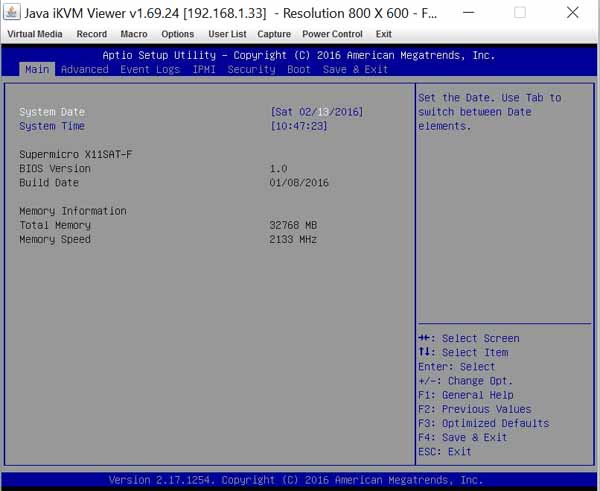
Although less useful for standalone systems, it is great for managing a large number of machines and even rack mounted systems. The IPMI 2.0 standard has been around for many years and this gives the motherboard the flexibility to be used as a workstation and/ or server.
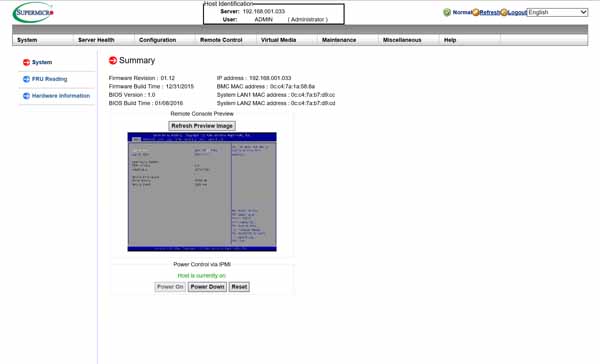
Typical Supermicro IPMI user interface for this motherboard. To access enter the IP address for BMC on the machine and use:
- User: ADMIN
- Password: ADMIN
This default username/ password will allow you to to enter IPMI remotely using a web browser or tools like Supermicro IPMIview.
Our test setup
For testing we used:
- CPU: Intel Xeon E3-1275 V5
- Motherboard: Supermicro X11SAT-F
- Memory: SK.Hynix 4x 8GB Unbuffered DDR4 SDRAM (32GB Total)
- Cooling: Stock Intel Heat Sink
- Storage: Micron P400e 200GB SSD
- OS: Windows Server 2012 R2
and Ubuntu 14.04 LTS
AIDA64 Memory Test
AIDA64 memory bandwidth benchmarks (Memory Read, Memory Write, and Memory Copy) measure the maximum achievable memory data transfer bandwidth.
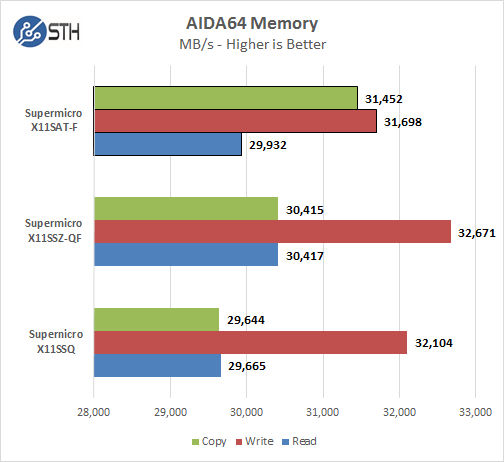
Memory Latency ranged at ~67ns which is in the range of motherboards in this class. The one thing to note is the improved Memory Copy numbers which show great improvement over past numbers.
Linux-Bench Test
We ran the motherboard through our standard Linux-Bench suite using Ubuntu as our Linux distribution. Linux-Bench is our standard Linux benchmarking suite. It is highly scripted and very simple to run. It is available to anyone to compare them with their systems and reviews from other sites. See Linux-Bench.
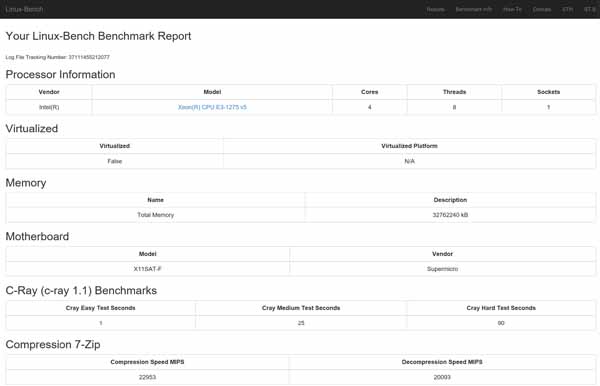
The full test results for our Linux-Bench run can be found here. Supermicro X11SAT-F Linux-Bench Test Results
SPEC CPU2006
SPEC CPU2006v1.2 measures compute intensive performance across the system using realistic benchmarks to rate real performance.
In our testing with SPEC CPU2006 we use the basic commands to run these tests.
” Runspec –tune=base –config=servethehome.cfg ,” then ” int ,” or ” fp .”
To do multi-threaded, we add in ” –rate=8.”
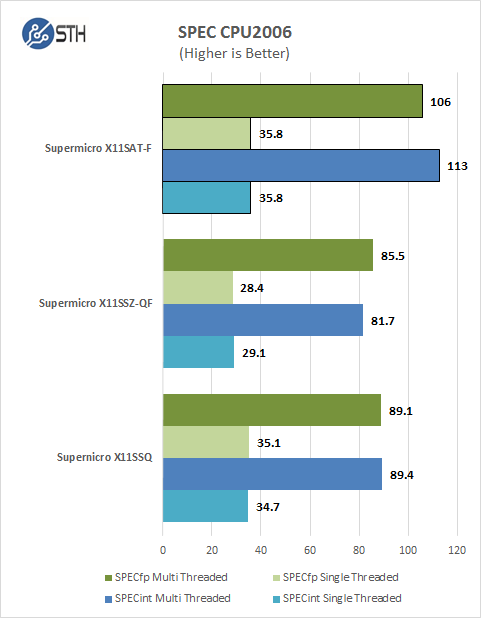
A X11SAT-F paired with an Intel Xeon E3-1275 V5 processor is a very good match for this setup. The E3-1275 V5 is able to generate respectable performance on the X11SAT-F and is our top performer at this time.
Power Tests
For our power testing needs we use a Yokogawa WT310 power meter which can feed its data through a USB cable to another machine where we can capture the test results. We then use AIDA64 Stress test to load the system and measure max power loads.
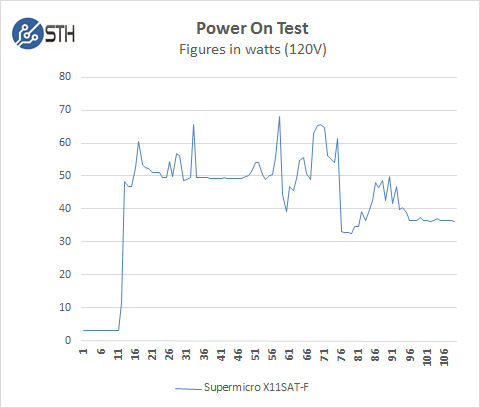
With IPMI active on the X11SAT-F the system uses 3 watts in the power off state which is normal. Load peaks at 68 watts during boot up procedures. It then settles down to 37 watts at the desktop.
Fully Loaded Stress Tests Power Use
For our tests we use AIDA64 Stress test which allows us to stress all aspects of the system.
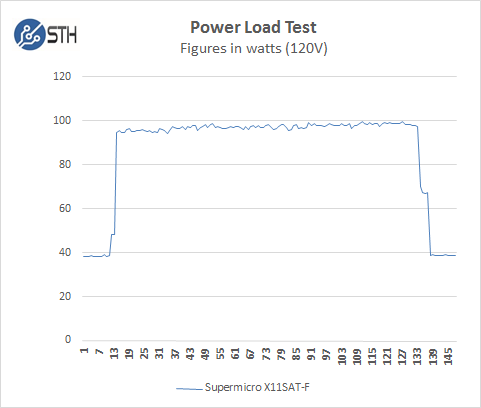
At default BIOS settings we come close to 100 watts with the system reaching 96 watts at max load.
Conclusion
After running several X11 platforms here in the lab we really like where these new workstation motherboards are heading, lower power and higher performance. Supermicro has built a very strong entry level workstation motherboard that offers features we usually see in higher end systems like IPMI. If you do not need IPMI or VGA Supermicro also offers a similar motherboard omitting those features in the X11SAT. The addition of IPMI on this motherboard mean that even if it were to be replaced years down the road in its workstation role, it will be extremely easy to then use as a server with remote management even using an Android or iOS device.

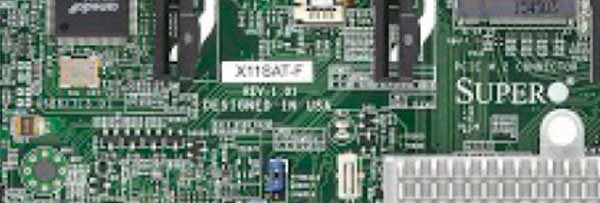
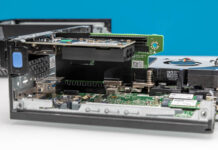


I have one of these MBs and it is very nice, but one large outstanding issue still lingers. Supermicro STILL has not gotten the Thunderbolt 3 part certified on this board. Which mean that the TB3 port is useless. Without certification the TB functionality is not turned on. USB still works, but not TB.
A full year has passed since the MB was released and I’m still waiting for that Intel certification. Pretty soon if this is not corrected I’ll have to move to a different platform as I need to connect this system to a very large DAS via TB3.